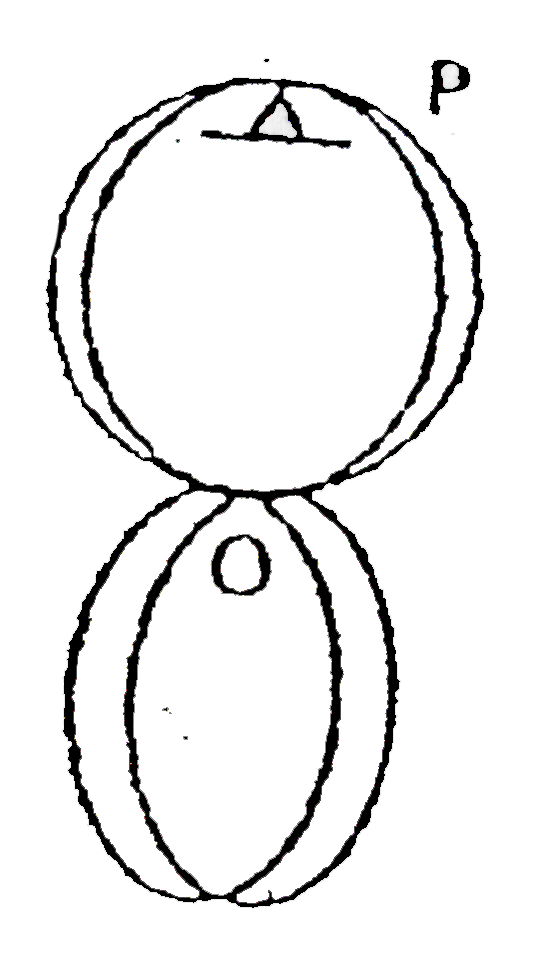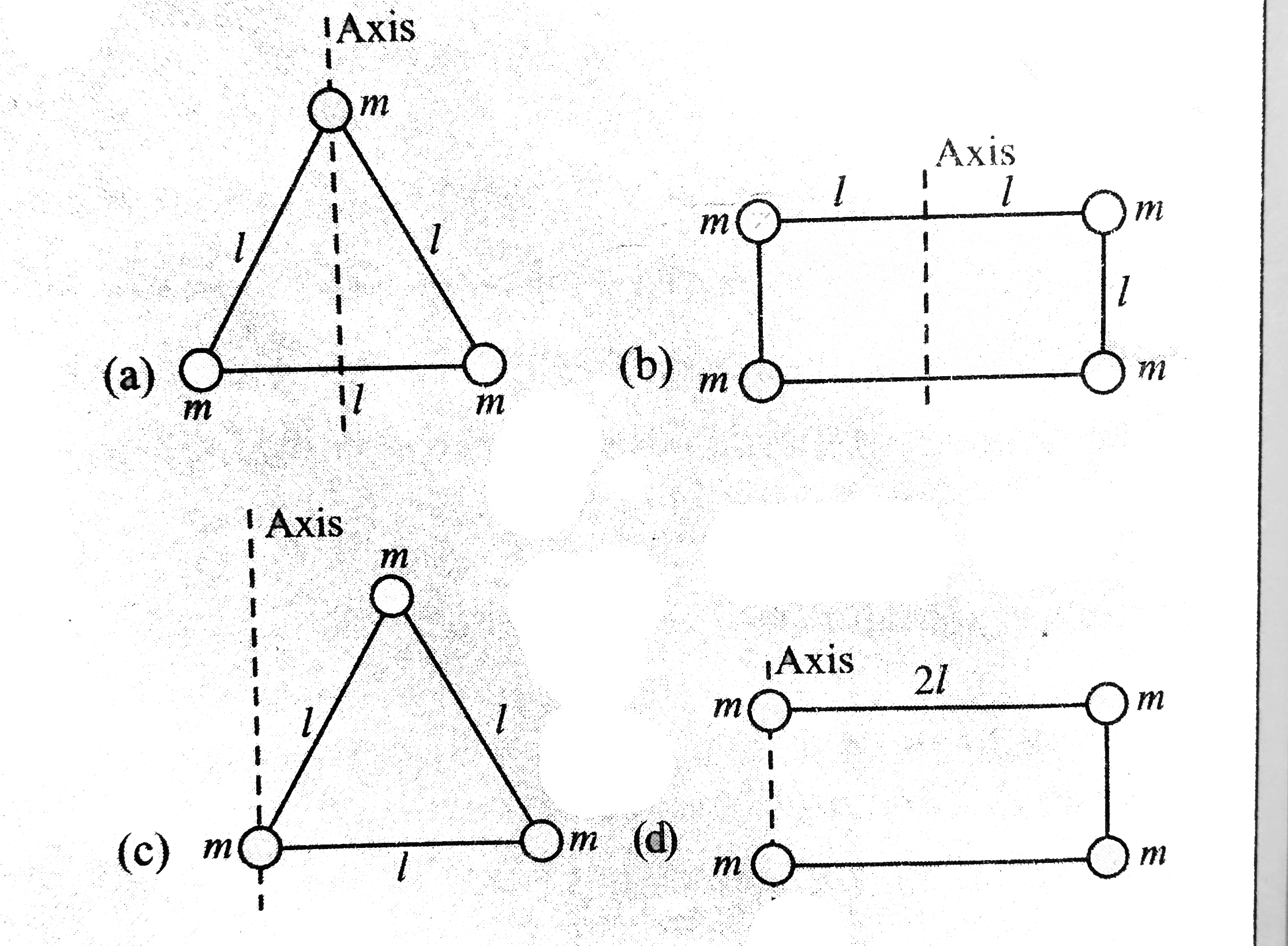A closed cylindrical tube containing some water (not filling the entire tube) lies in a horizontal plane. If the tube is rotated about a perpendicular bisector, the moment of inertia of water about the axis
increases
decreases
remains constant
increases if the rotation is clockwise and decreases if it is anticlockwise
The correct Answer is:A
To solve the problem of determining how the moment of inertia of water in a closed cylindrical tube changes when the tube is rotated about a perpendicular bisector, we can follow these steps:
Step 1: Understand the System
We have a closed cylindrical tube that contains some water, but it is not filled to the top. The tube is lying in a horizontal plane and is rotated about a perpendicular bisector.
Hint: Visualize the setup: a horizontal tube with water inside, and identify the axis of rotation.
Step 2: Identify the Axis of Rotation
The axis of rotation is the perpendicular bisector of the tube. This means that the tube is rotated around a line that divides it into two equal halves.
Hint: Remember that the moment of inertia depends on the distance of mass from the axis of rotation.
Step 3: Understand the Effect of Rotation
When the tube is rotated, the water inside experiences a centrifugal force that pushes it outward from the axis of rotation. This causes the water to move away from the center of the tube.
Hint: Think about how centrifugal force acts on the water and how it affects the distribution of mass.
Step 4: Analyze the Moment of Inertia
The moment of inertia (I) of a mass distribution is calculated using the formula:
I=∑mir2i
where mi is the mass of each particle and ri is the distance from the axis of rotation. As the water is pushed outward, the distance r increases.
Hint: Recall that as r increases, the contribution of each mass element to the moment of inertia increases.
Step 5: Conclusion
Since the distance of the water from the axis of rotation increases due to the centrifugal effect, the moment of inertia of the water about the axis also increases.
Final Answer: The moment of inertia of the water about the axis increases.
We have a closed cylindrical tube that contains some water, but it is not filled to the top. The tube is lying in a horizontal plane and is rotated about a perpendicular bisector.
The axis of rotation is the perpendicular bisector of the tube. This means that the tube is rotated around a line that divides it into two equal halves.
When the tube is rotated, the water inside experiences a centrifugal force that pushes it outward from the axis of rotation. This causes the water to move away from the center of the tube.
The moment of inertia (I) of a mass distribution is calculated using the formula:
I=∑mir2i
where mi is the mass of each particle and ri is the distance from the axis of rotation. As the water is pushed outward, the distance r increases.
Since the distance of the water from the axis of rotation increases due to the centrifugal effect, the moment of inertia of the water about the axis also increases.
Topper's Solved these Questions
- BOOK - HC VERMA ENGLISHCHAPTER - ROTATIONAL MECHANICSEXERCISE - Objective -214videos
ROTATIONAL MECHANICS
- BOOK - HC VERMA ENGLISHCHAPTER - ROTATIONAL MECHANICSEXERCISE - Exercises86videos
ROTATIONAL MECHANICS
- BOOK - HC VERMA ENGLISHCHAPTER - ROTATIONAL MECHANICSEXERCISE - worked out Examples29videos
ROTATIONAL MECHANICS
- BOOK - HC VERMA ENGLISHCHAPTER - REST AND MOTION : KINEMATICSEXERCISE - Question for short Answer13videos
REST AND MOTION : KINEMATICS
- BOOK - HC VERMA ENGLISHCHAPTER - SIMPLE HARMONIC MOTIONEXERCISE - Question for short Answer15videos
SIMPLE HARMONIC MOTION
Similar Questions
A circular disc of radius R and thickness R6 has moment of inertia about an axis passing through its centre and perpendicular to its plane. It is melted and recasted into a solid sphere. The moment of inertia of the sphere about its diameter as axis of rotation is
View SolutionTwo identical rings each of mass m with their planes mutually perpendicular, radius R are welded at their point of contact O. If the system is free to rotate about an axis passing through the point P perpendicular to the plane of the paper, then the moment of in inertia of the system about this axis is equal to
 View Solution
View Solution
Knowledge Check
- Question 1 - Select One
The moment of inertia of a rod about its perpendicular bisector is I . When the temperature of the rod is increased by ΔT , the increase in the moment of inertia of the rod about the same axis is (Here , α is the coefficient of linear expansion of the rod )
AαIΔTB2αIΔTCαIΔT2D2IΔTα
A long cylindrical tube containing water in closed by an equinvex lens of focal length 10 cm in air. A point source is placed along the axis of the tube outside it at a distance of 21 cm from the lens. Locate the final image of the source. Refractive index of the materials of the lens =1.5 and that of water =1.33.
View SolutionCalculate the moment of inertia of each particle in Fig. about the indicated axis of rotation.
 View Solution
View SolutionThe moment of inertia of a uniform ring about an axis passing through its centre and perpendicular to its plane is 100kgm2. What is the moment of inertia of the ring about its diameter ?
View SolutionThe moment of inertia of a uniform ring about an axis passing through its centre and perpendicular to its plane is 100kgm2. What is the moment of inertia of the ring about its diameter ?
View SolutionA spherical shell of mass M and radius R filed completely with a liquid of same mass and set to rotate about a vertical axis through its centre has a moment of inertia I1 about the axis. The bottom. If moment of inertia of the system is I2 when the shell is half filled and I3 is the moment of inertia when entire water drained off then :
View SolutionA circular tube of radius R and across- sectional radius r(r<<R) is filled completely with iron balls of th radius ρ. Iron balls just fitting into the tube . The tension in the tube when it is rotated about its axis perpendicular to its plane with angular velocity ω
View SolutionA tube of length L is filled completely with an incompressible liquid of mass M and closed at both the ends. The tube is then rotated in a horizontal plane about one of its ends with a uniform angular velocity ω. The force exerted by the liquid at the other end is
View Solution

